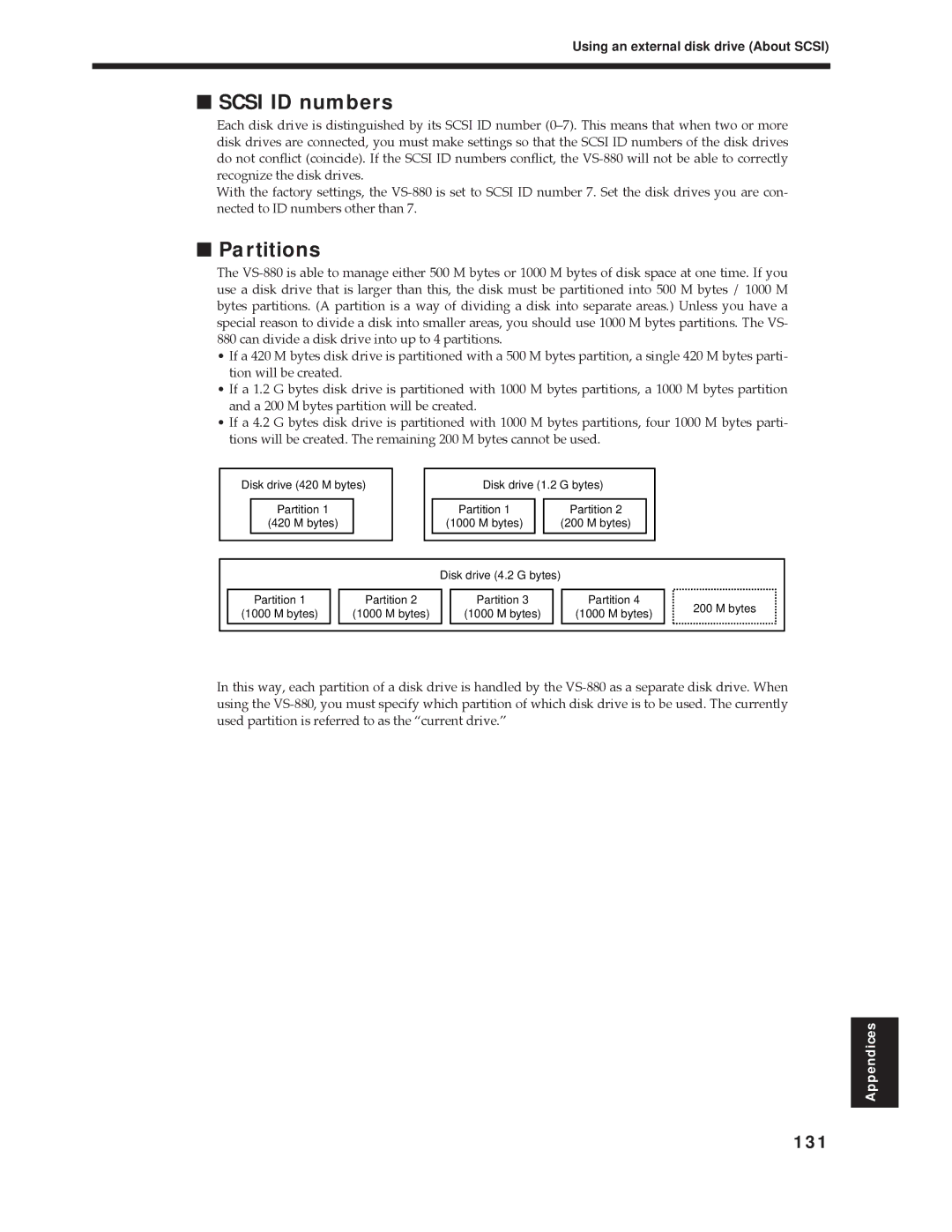
Using an external disk drive (About SCSI)
■SCSI ID numbers
Each disk drive is distinguished by its SCSI ID number (0Ð7). This means that when two or more disk drives are connected, you must make settings so that the SCSI ID numbers of the disk drives do not conflict (coincide). If the SCSI ID numbers conflict, the
With the factory settings, the
■Partitions
The
¥If a 420 M bytes disk drive is partitioned with a 500 M bytes partition, a single 420 M bytes parti- tion will be created.
¥If a 1.2 G bytes disk drive is partitioned with 1000 M bytes partitions, a 1000 M bytes partition and a 200 M bytes partition will be created.
¥If a 4.2 G bytes disk drive is partitioned with 1000 M bytes partitions, four 1000 M bytes parti- tions will be created. The remaining 200 M bytes cannot be used.
Disk drive (420 M bytes)
Partition 1
(420 M bytes)
Disk drive (1.2 G bytes)
Partition 1 |
| Partition 2 |
(1000 M bytes) |
| (200 M bytes) |
|
|
|
|
|
|
| Disk drive (4.2 G bytes) |
|
| ||
|
|
|
|
|
|
|
|
|
| Partition 1 |
| Partition 2 |
| Partition 3 |
| Partition 4 | 200 M bytes |
| (1000 M bytes) |
| (1000 M bytes) |
| (1000 M bytes) |
| (1000 M bytes) | |
|
|
|
|
| ||||
|
|
|
|
|
|
|
|
|
|
|
|
|
|
|
|
|
|
In this way, each partition of a disk drive is handled by the
Appendices
